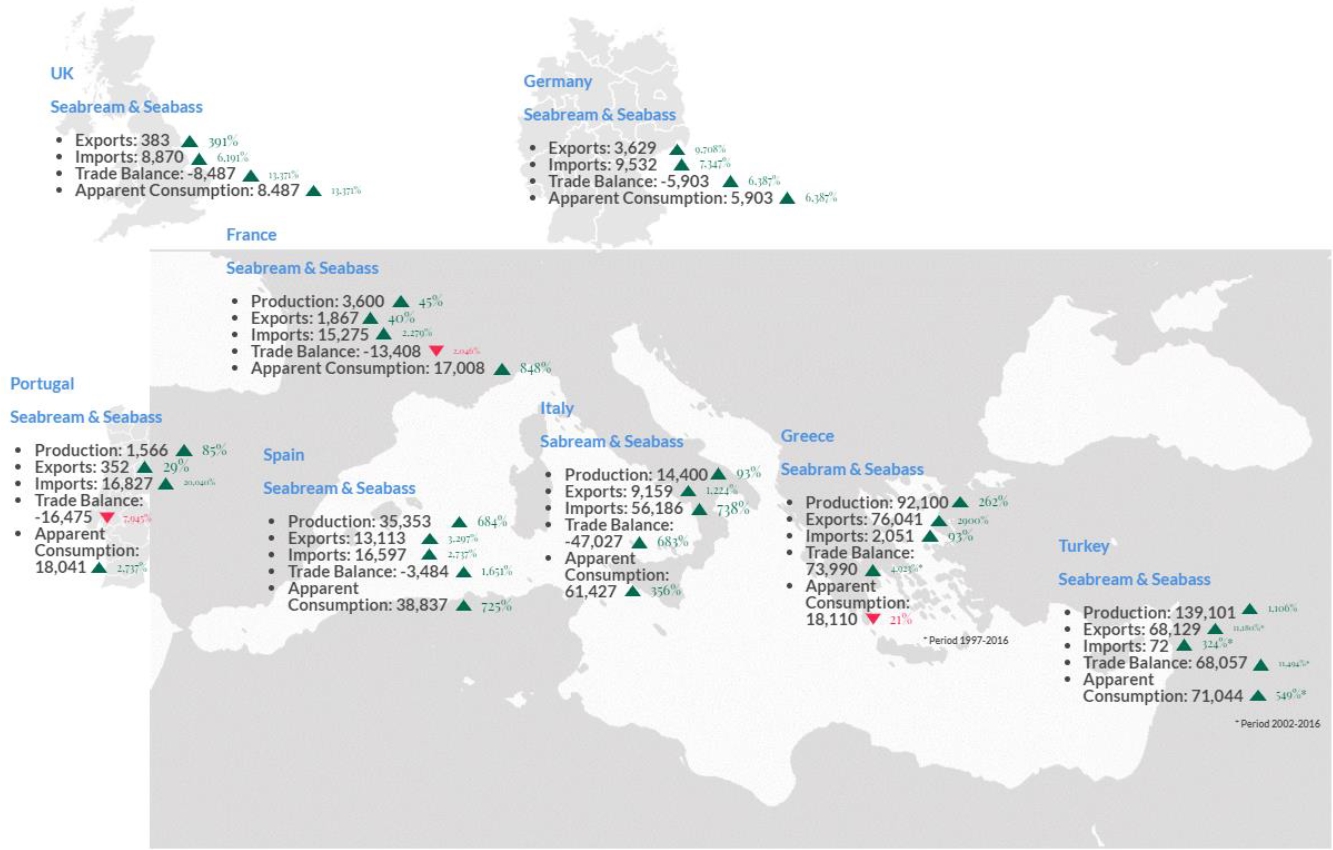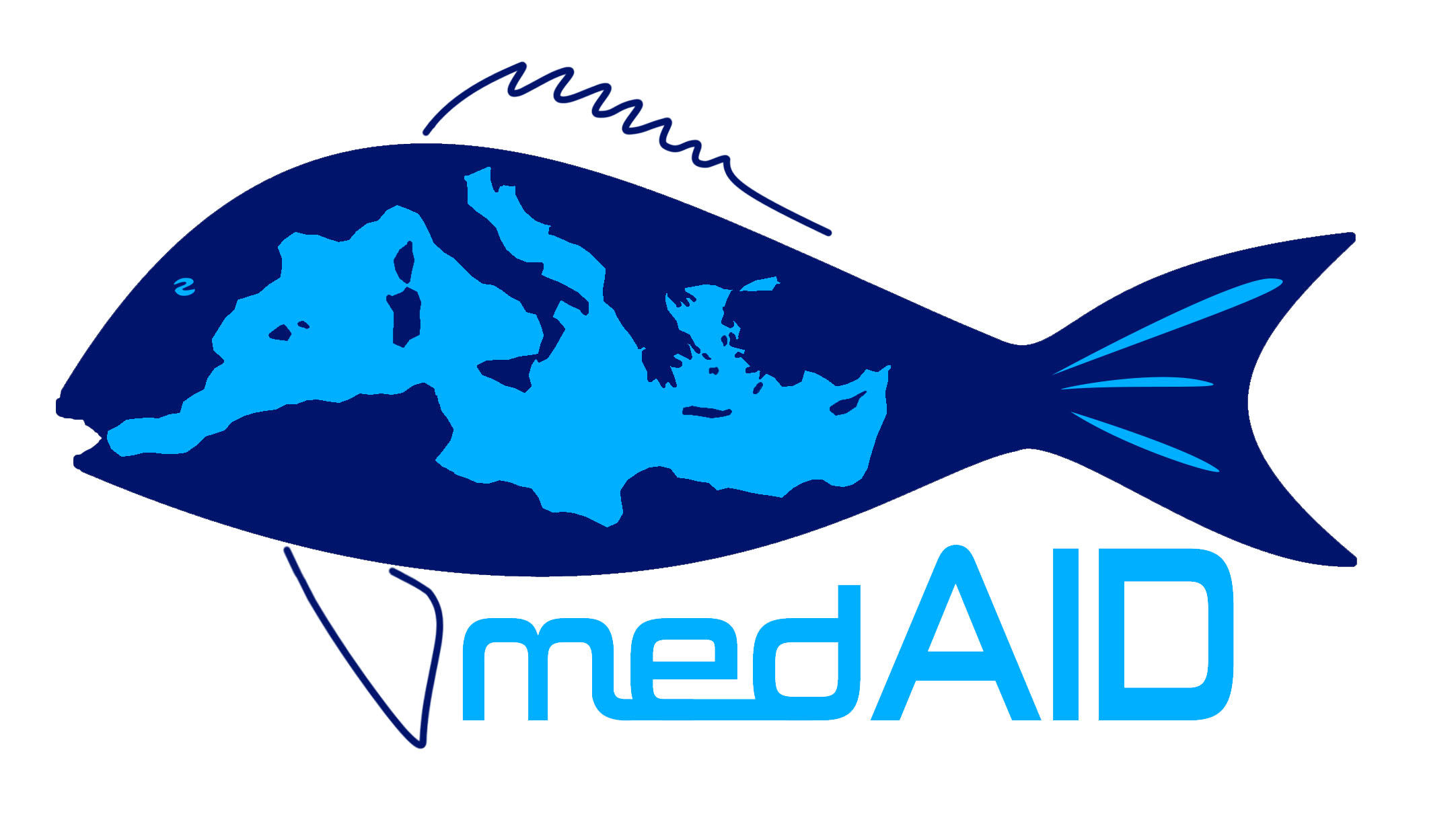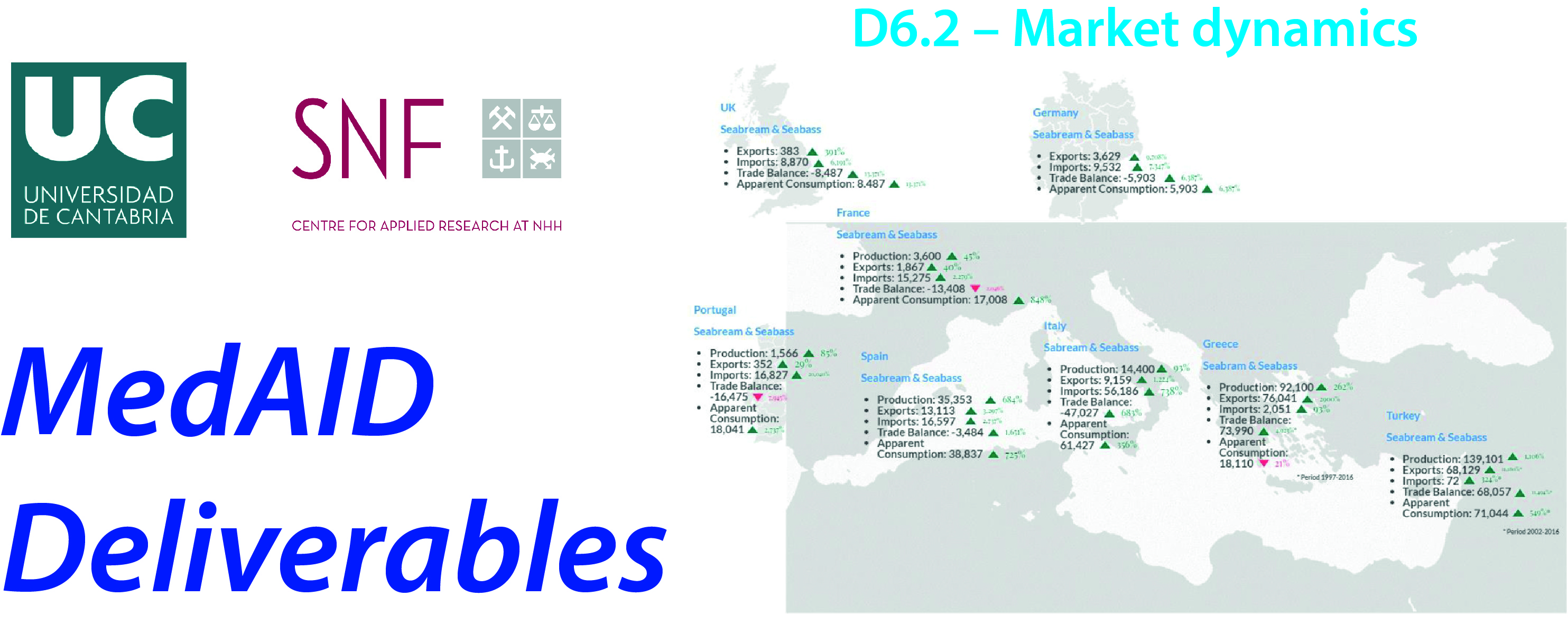MedAID task 6.2 focuses on the analysis of market equilibrium by the estimation of the supply and demand functions at various levels of the value chain and under different competitive environments. The market for seabass and seabream is periodically shocked by instability and price volatility, seriously compromising the profitability of the business and the survival of the industry (STECF, 2014, 2016, 2018). The analysis performed here attempts to identify the causes of this instability and to be used as reference for the development of strategic marketing recommendations to avoid upcoming risks and failures.
The analysis is performed at different levels which involve long and short term, international and national markets and disaggregated by value chain levels. Every model was tested for those National markets where information is available, with the required periodicity and in long enough series to fit with the minimum sample size. Unfortunately these data are not available or complete for all countries in the required format. However, the main national markets, covering about three quarters of total seabass and seabream consumption and production, are included in the analysis in one or several models.
Results provide information about market stability and price volatility; substitution across countries and species; and price transmission and bargain power in the value chain. The outcomes provide a description of the market drivers, the way they contribute to set the point of equilibrium and how this affects market prices. Long term models provide information about the variables affecting domestic demand and supply in the countries were they were tested. Although these models are focused on domestic supply and demand, the influence of external trade is implicit, and results evidence differences across countries according to the relevance of trade in their internal markets, whether it would be imports or exports (Figure 1). The role of international trade is tested in the frame of competition across exporting countries and species. Demand and supply models are also tested under the conditions of competitive relations and then compared with the previous findings at domestic levels. Finally, the relations across agents in the value chain and the consequences of these relations on the final price paid by consumers and farmer returns are studied by testing price transmission.
Methods and materials
Four main statistical models are tested in this task combining two different statistic methods. On one side, the equivalence of elasticities is tested in a long term model using simultaneous structural equations. On the other side, competition and price transmission is tested by using cointegration. Cointegration is also used in the tests for elasticity of supply and demand in the cases of international trade, due to the adequacy of the periodicity of the data series, sample size, and other distributional properties. This was not possible in the models testing long term trends and effects on supply and demand since the use yearly data which hardly fits the minimum sample size requirements for specification of the cointegrating model.
Long term trends and equilibrium are tested using simultaneous structural equation modeling. This is a regression like model allowing more than one endogenous variable and so, considering the same number of equations as dependent variables. Regression parameters are estimated by applying different iterative procedures on the structure of the correlation or covariance matrix. When the analysis requires studying relationships across prices during a sufficiently long period of time and sample size, cointegration techniques are the primary methods used. These models are based on statistical procedures capturing price linkages along a period of time, where some form of cointegration between prices defines the market and allows predicting prices and random changes in the price chain. The models developed in this research combine two approaches. Horizontal price integration tests for competition across products at the same level of the value chain. Vertical price transmission tests for the price linkages along the value chain.
Data used for testing the models comes from different official sources. The series used include data on production, quantities and prices of external trade, prices at different levels of the value chain, disposable income, prices of fish meal and fish oil, interest rates in the long and short term, tariffs and exchange rates. The series were obtained from the following official sources:
• FAO. Fishstat and Globefish data for yearly production and external trade figures by countries.
• World Bank. Series for disposable income and exchange rates by countries from the World Bank Development Indicators.
• European Union. EU External Trade Database for monthly figures of international trade by countries.
• Spanish Ministry of Agriculture and Food. Series of seabream prices at different stages in the value chain from the National Observatory of Food Prices.
Findings & conclusions
Results found instability in equilibrium and prices. Demand for the two species is generally price elastic, which means high consumers’ price sensitivity. In contrast, supply is mainly price inelastic, not being able to adapt, in an efficient lapse of time, the production volumes to the variations in the price. The result is price volatility, affecting manly producers and exporters incomes. Further, the price linkages along the value chain show upstream price transmission for domestic products, and substitution with cheaper imports. In such a scenario, transferring costs to the market becomes harder for many farmers, specially small and medium size.
Market substitution was found across countries of origin and species. On one side, there is a competitive causal web across the prices of seabream or seabass form different countries. Domestic ex-farm prices are related to those of imports and the prices of exports from Greece and Turkey are also causally connected. In this playground Turkey plays the role of price leader, however, it is also the most volatile price series. On the other side, there is also substitution across bass and bream, which involves the risk of market cannibalization. By following the same price policies, the two species result like if they were the same undifferentiated product. Thus, any variation in the price of any of the species without impacting the quantities sold of the other. This effect was verified at the domestic and international markets.
Demand at the consumer level was found to be also affected by income and substitution effects. Seabass and seabream are superior goods. This means that demanded quantities increase when consumers’ disposable income increases. In periods of economic contraction, instead, demand decreases, and the fall in purchase volumes can only be attenuated by decreasing prices in those markets with elastic demand. In the few cases found with inelastic demand, there is no way to recover sales until the economic cycle returns to recovery.
Despite the imperfections found in the market, some results show the potential of improvements in product differentiation, contributing to relieve the pressures on ex-farm prices and providing the international market with more stability. Further, improvements proposed in the Project will be introduced in the models in the forms of simulations to see the expected impacts on market equilibrium, to be use as guidelines in the design of the strategic recommendations.
Access to the full deliverable


